Now, centuries later, the two countries have still maintained those strong ties and the economic relations between the two sides are seemingly on a new path to growth.
In December 2013 when Chinese President Xi Jinping proposed that China and Central Asian countries build an "economic belt along the Silk Road", a new chapter was begun in the global economy and consequently in Iran and China’s all-out ties.
In February 2016, with the arrival of a cargo train from China to Iran, a milestone was marked in the economic relations between the two sides and the ancient "Silk Road" was once again revived.
What follows is a brief look at the One Belt One Road (OBOR) initiative, its pros and cons and the impact it could have on Iran’s economy.
The initiative
The Belt and Road Initiative (BRI), also known as the One Belt One Road (OBOR) or the Silk Road Economic Belt and the 21st-century Maritime Silk Road is a development strategy adopted by the Chinese government involving infrastructure development and investments in 152 countries and international organizations in Europe, Asia, Middle East, Latin America and Africa.
"Belt" refers to the overland routes for road and rail transportation, called "the Silk Road Economic Belt"; whereas "road" refers to the sea routes or the 21st Century Maritime Silk Road.
The Chinese government calls the initiative "a bid to enhance regional connectivity and embrace a brighter future". Some observers see it as a push for Chinese dominance in global affairs with a China-centered trading network.
OBOR: pros and cons
Although clearly, the OBOR initiative entails great merits for the global economy, especially for the involving countries, there are some people who believe it could act as a double-edged sword.
They argue that with the Chinese large-scale investment and growing presence in the involved countries, there is the risk of A “China hegemony” replacing the notion of “US and EU” dominated economy.
It is said that one of the most important aspects of the OBOR project is that it is aimed to reduce the domination of US and Europe over international relations system which has been formed during the past 500 years, but isn’t it going to start another form of yuan dominance?
In March 2018, a study by the Washington-based Center for Global Development (CGD) reported that China’s ambitious Belt and Road infrastructure initiative could raise the sovereign debt risks in eight countries involved in the plan.
According to CGD, of the 68 countries identified as potential borrowers in the Belt and Road Initiative (BRI) 23 were found to be already at a “quite high” risk of debt distress.
“Those countries include Pakistan, Djibouti, the Maldives, Laos, Mongolia, Montenegro, Tajikistan and Kyrgyzstan.” The study said.
Advocates of the plan, on the other hand, argue that aside from regional stability and security as a result of close cooperation between the involved countries, Industrial structure improvement, energy security and development of infrastructure for the countries in the way of the new Silk Road are just a few of the great advantages that the huge project has to offer.
Iran and OBOR
As I mentioned before, Iran has been a major gateway to ancient Silk Road, and thanks to its strategic position among the Arabian Peninsula, Central Asia and South Asia, the country is still a critical crossroad in the region.
In realization of its ambitious plan for implementing the OBOR initiative, China inevitably needs Iran’s support in the process. Of course, the project is executable even without Iran’s participation but the costs won’t be justifiable, both literally and figuratively. Considering the two countries’ political and economic agendas and interests, the two sides need each other to move forward and that is a known fact.
On Iran side, the US withdrawal from Iran’s nuclear deal (known as the Joint Comprehensive Plan of Action or JCPOA) and re-imposition of sanctions on the country has made Iran more determined to pursue forming a resilient economy in which the dependence on US dollar is minimized. In this regard, once again the significance of the economic ties with China comes to focus.
China could be Iran’s biggest source of the capital it needs to finance infrastructure projects in the absence of global banks which are intimidated by the US sanctions.
As Advisor to Iranian Transport Minister Asghar Fakhrieh Kashan said, the Chinese initiative would do much more than just provide a channel for transporting goods. “Think infrastructure, city planning, cultural exchanges, commercial agreements, investments and tourism,” he said. “You can pick any project, they are all under this umbrella.”
As for China, since the country is heavily reliant on Iranian energy imports and more importantly one of the key issues for China to implement the OBOR initiative in the Middle East is to maintain regional stability and build trust among the involved countries, Iran, as one of the major players in the region which has deep ties with countries like Iraq, Syria, Yemen and Afghanistan can play a key role in realizing this goal.
Final thoughts
China’s Belt and Road Initiative (BRI) hopes to deliver trillions of dollars in infrastructure financing to Asia, Europe, and Africa.
With the project coming into force, more and more countries in the region are upgrading their infrastructure to get ready to fully benefit from the potentials of this huge economic opportunity.
Among Iran’s neighbors, Russia, Afghanistan, Azerbaijan, Turkmenistan, Georgia and Turkey have already inked an agreement on customs cooperation to facilitate transit from Asia to Europe.
Russia has invested $850 million on the railway projects in the Caspian region and Pakistan is benefiting from a $46 billion investment from the Chinese in Gwadar port.
On the other hand, there are numerous uncompleted transportation projects in Iran which require funding and attention if the country is willing to advance with other rivals.
Iran is currently developing Chabahar Port which is the biggest competition for Pakistan’s Gwadar.
Based on Chabahar’s project development plan, this port is going to be linked to the transit routes of Afghanistan, Turkmenistan, Turkey and Azerbaijan via rail through a series of railway projects called North-South Corridor.
Now, considering China’s strong support in the development of Gwadar port, the future of Chabahar is completely dependent on its development speed.
Iran should place greater importance on its transportation infrastructure and allocate more funds in this area and not to rely heavily on the Chinese financial support, in order to be able to take full advantage of the platform that OBOR initiative is providing for boosting the country’s economy.
MNA/TT


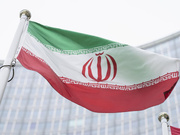


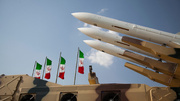

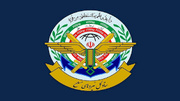



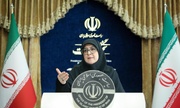








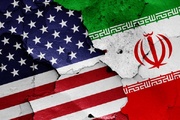




Your Comment